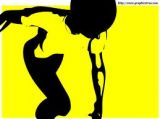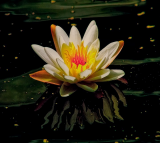- Forum
- General Discussion | Introductions | Off Topic Forum
- Photography General Discussion
- Difference between a digital IR camera and film IR camera?
Difference between a digital IR camera and film IR camera?
-
 Topic Author
Topic Author
- Jacob1977
- Lone Wolf
-
- Nikon D90 and D200
- Followers: 13
- Posts: 170
-
Points:
307
-

- effron
- Newbie
- Followers: 1623
-
Points:
129640
-

- Baydream
- Moderator
-
- Canoni/60D/70D/5DmkIII
- Followers: 388
- Posts: 11185
-
Points:
7280
Post #41340
www.opticsgeek.com/
Might be a good way to start.
Shoot, learn and share. It will make you a better photographer.
fineartamerica.com/profiles/john-g-schickler.html?tab=artwork
-
 Topic Author
Topic Author
- Jacob1977
- Lone Wolf
-
- Nikon D90 and D200
- Followers: 13
- Posts: 170
-
Points:
307
Post #41410
Baydream wrote: This place sells a Canon P&S converted to IR for $200.
www.opticsgeek.com/
Might be a good way to start.
Thanks for the tip, any chance you know of anyone that sells out of box IR Nikon's?
-

- effron
- Newbie
- Followers: 1623
-
Points:
129640
Post #41417
www.lifepixel.com/
Why so serious?
-

- robbie
- Apprentice
-
- D200,665nm D200,720NM D70,D7000
- Followers: 72
- Posts: 2768
-
Points:
25
Post #47532
Processing film is very time consuming,getting a perfect exposure is a nice dream whereas with digital shooting Raw it`s very easy.Printing will be another task I wouldn`t want to face,doing test strips,dodging and burning but if you send the negs out to a pro lab printing will be very expensive.
Processing digital images is very easy once you know what to do.Uploading your files to an on-line printer is commonplace as opposed to scanning your film negs to upload.
Costwise a 4gb card costs about $20 and you can shoot forever whereas a roll of film will run you about $15[just a guess] for a 24 exposure b/w or color[your choice].Color Ir film calls for a lab process
if you can find one to do it,the one hour labs won`t touch it!
I used to shoot film Ir,b/w and color but digital is so much easier.
Hope this helps.
-

- Henry Peach
- Apprentice
-
- I currently use a 5DII or Sony Nex-3 most of the time.
- Followers: 50
- Posts: 2925
-
Points:
16
Post #47886
With my IR converted Canon 20D I get a 790nm filter, which is nicer than a #25, and I'm happily using ISOs up to 1600. Even that high the noise is pretty tame compared to IR film. And Photoshop makes all sorts of processing options a breeze.
I like IR because it's freaky and fun, and I usually find hand held photography more fun than using a tripod. So for me digital IR (a converted camera) has been a lot better than film IR.
On the other hand 35mm film SLRs are dirt cheap these days. It would be fairly cheap and easy to try IR film out.
-

- Graflex 4x5
- Lone Wolf
-
- Nikon D300
- Followers: 4
- Posts: 178
-
Points:
0
Post #47909
FYI: if you're having trouble with over saturated reds, your sensor's IR filter may be a bit lacking. B+W makes a good IR stop filter.
No matter how fast I go, there's always someone slower in front of me.
-

- robbie
- Apprentice
-
- D200,665nm D200,720NM D70,D7000
- Followers: 72
- Posts: 2768
-
Points:
25
Post #47922
with the filter on,in Photoshop your image will be red but in some raw converter and using the 'eye dropper' you can select the custom WB by clicking anywhere in the image and the red will disappear.My 665nm D200 cannot set a 'custom WB' because that feature wasn`t built in the camera but a 'preset WB' was set by the man who converted it.The D200 with a filter on the lens is terrible for Ir,very noisy.Hotspot is another problem encountered,it`s lens related so if you are thinking of trying Ir
make sure your lens doesn`t give hotspots.
Most of the lower level Nikons are great for ir with the D70 the king,the Pro level Nikons are not good Ir cameras because they are built for visible light with a strong Ir blocking filter.
You will see the term 'channel swap' and wonder what`s the significance....It will cause the sky to turn blue and the vegetation white most of the time.
This is the 'channel swap' for Photoshop..
image/adjustment/channel mixture...
output channel....red 100 change to 0.......blue 0 change to 100 [don`t click,just select blue channel
output channel...red.....0 change to 100 blue 100 change to 0...click ok.
I used an 'action' which is...duplicate the image,auto levels.channel swap.
Auto levels will give your image more contrast and tonal range but be careful of blown highlights.
From there you can use plugins or play around in photoshop for more colors.
This is my Ir home.......
irphotocom.proboards.com/index.cgi ?
Feel free to browse.
- Forum
- General Discussion | Introductions | Off Topic Forum
- Photography General Discussion
- Difference between a digital IR camera and film IR camera?
Latest Reviews
The Panasonic G9 II is a 25.2-megapixel micro four thirds camera with numerous features that make it punch out of its weight class, like 779 AF points, 5.8K video, and weather sealing.
The Fujifilm XT5 is a 40MP mirrorless camera capable of 6.2K video at 30p. With those specs, it’s an ideal choice for photographers needing a camera to pull double duty for imaging and video.
The Canon EOS R100 is an entry-level mirrorless camera introduced in 2023. But just because it’s an entry-level camera doesn’t mean it’s a bare-bones camera. Find out why in this review!
Nikon’s retro-looking Nikon Zfc is anything but retro. Under its classic body is a host of features and amenities that make it a worthwhile compact mirrorless camera for 2024.
Forum Top Posters
-
1Scotty 6 posts
-
2TCav 6 posts
-
3Ruby Grace 4 posts
-
4Street Shark 4 posts
-
5Nefarious 3 posts
-
6Roger Lang 3 posts
-
7Carter Gledhill 2 posts
-
8Chris Briggs 2 posts
-
9Garbo 2 posts
-
10amirahusse... 2 posts
Latest Articles
Starting a photography business is one thing; sustaining your business over a long period of time is another. Use the tips in this professional photography guide to build something with longevity!
The Panasonic G9 II is a 25.2-megapixel micro four thirds camera with numerous features that make it punch out of its weight class, like 779 AF points, 5.8K video, and weather sealing.
Cinematic photography is an interesting genre that combines photographic and videographic skills along with effective storytelling techniques. The result? Highly impactful images!
Newborn photography requires skill, the right gear, and a lot of patience. This beginner’s guide discusses critical topics that will help you be more prepared for before, during, and after the shoot.
To fill the frame means to expand the footprint of the subject in your shot. Get in close, zoom in, crop the image, or use other techniques to bring the subject to the forefront.
With these simple yet effective beginner photography tips, you can avoid some of the common mistakes beginners make and get improved results with your images.
Urban photography is a genre showcasing features in urban settings. You can photograph people, architecture, mass transit, and many other subjects. Learn how to do so in this guide!
The Nikon D850 might be an older DSLR, but it was ahead of its time when it debuted in 2017. That means it still has plenty of firepower to compete with today’s powerful mirrorless cameras.














